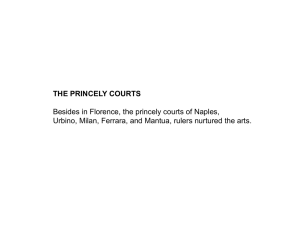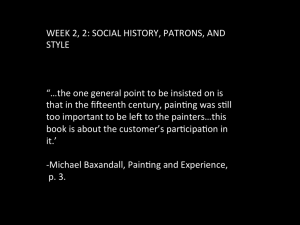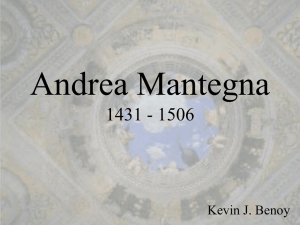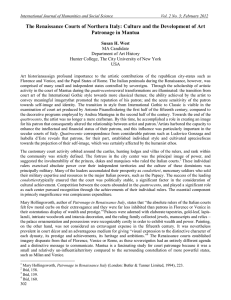italy, 1400-1500
advertisement
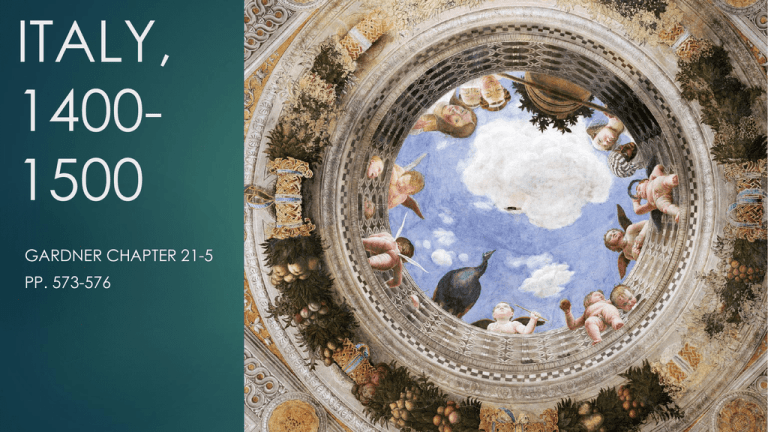
ITALY, 14001500 GARDNER CHAPTER 21-5 PP. 573-576 SANT’ANDREA LEON BATTISTA ALBERTI, west façade of Sant’Andrea, Mantua, 1470 Another great Renaissance prince and art patron was Ludovico Gonzaga, the ruler of Mantua Alberti is commissioned to redesign the church of Sant’Andrea -> reflects his study of ancient Roman architecture -> combines a Roman triumphal arch and an ancient temple façade Giant pilasters flank arch and support pediment Size of the façade dictated by the small scale of the piazza in front -> height and width are identical Interior of Sant’Andrea Great coffered barrel vault -> reminiscent of the Pantheon and Constantine’s Basilica Nova Alberti abandoned the medieval columnar arcade for the nave -> instead it is a single huge hall w/independent chapels branching off at right angles Large barrel vault canopy hangs above the west façade and shields the west window of the nave from sunlight ANDRE MANTEGNA – ROOM OF THE NEWLYWEDS ANDREA MANTEGNA, Room of the Newlyweds, 1465-1474, Ducal Palace, Mantua Painted in a room that was used as the Duke’s bedroom and reception room Room is a cube in shape, “domed” with an illusionistically painted ceiling Calls to mind the Second Style of Roman painting MANTEGNA – CEILING OF THE CAMERA PICTA Inside the Camera Picta/Room of the Newlyweds, the viewer becomes the viewed -> figures look down into the room from a painted oculus opening onto a blue sky This is the first perspectival view of a ceiling from below = DI SOTTO IN SU = “from below upward” Dramatic used of TROMPE L’OEIL = “deceives the eye” Two groups of spectators, several putti, bird, flower pot FORESHORTENED CHRIST ANDREA MANTEGNA, Dead Christ, ca. 1500, tempera on canvas Another example of the artist’s mastery of perspective Seems to be a strikingly realistic study of foreshortening -> but the size of the feet are reduced to avoid blocking the body A work of overwhelming emotional power and intensely poignant depiction of biblical tragedy
